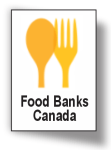 The history of food banks in Southern Ontario
The history of food banks in Southern Ontario
From Emergency Help to Essential Support
Food banks in Ontario have evolved — they have gone from being a temporary fix during tough times to a crucial part of the community’s support system. What started as small-scale efforts to feed hungry families during recessions has turned into a massive network trying to keep up with rising demand. Even as they have grown bigger and more organized, food banks are still stuck dealing with the same core issues that made them necessary in the first place.
The Early Days: 1980s to 1990s
Born from Hard Times
Food banks were first established in Southern Ontario during the rough economic patches of the early ’80s. The Food Bank of Waterloo Region was created in 1984 as a “quick fix” for hunger caused by job losses. Around the same time, over in Renfrew County, locals held a community meeting in 1988 recognizing that nearly 1,000 residents needed help. These early efforts in Ontario were mirroring trends started in the USA, like John van Hengel, who started the very first food bank in Arizona in 1967.
Back then, these places were skeletal operations. The Waterloo food bank shared space at a local homeless shelter and started by helping five community groups. By 1988, they were moving over 280,000 pounds of food a year. Renfrew’s operation was even scrappier—they used an old plumbing warehouse helping 10–12 families a week at first. That number doubled in just a year. Everything depended on volunteers and whatever donations they could scrape together.
Growth and consolidation across Ontario
By the late ’80s, food banks realized they needed to work together. Nationwide efforts like the Canadian Association of Food Banks (now Food Banks Canada), formed in 1987 spilled over to provincial ones — the Ontario Association of Food Banks (OAFB) in 1992, (now called Feed Ontario.)
Then in 1995 the province slashed welfare by over 20% increasing food bank use grew by 30% almost overnight.
Food banks improve their organization: 2000s–2010s
Bigger Spaces, Better Systems
Food banks became more serious entities in the 2000. Waterloo’s operation moved to a proper warehouse in 2000, handling 2.8 million pounds of food yearly. Renfrew upgraded into an old military building where they could finally store fresh and frozen items. Food banks began using technology to up their game: databases like Link2Feed started tracking who needed help.
Food banks also started getting more creative with their food sourcing. Programs like Second Helping in Waterloo, started in 1998, rescued unsold groceries from stores, cutting waste while restocking their own shelves. Smaller food banks got a boost when Feed Ontario helped them get grants for basics like fridges and shelving in 2015.
New Faces, Same Old Problems
Even with these improvements, food banks kept seeing the same heartbreaking trends. By 2001, nearly half the people walking into Waterloo’s food bank were kids, and 1 in 5 families had pay cheques inadewuate to meeting family needs.
Then the 2008 financial crash hit. Food bank use in Ontario jumped a shocking 4,800% between 2001 – 2008. By 2005, over 24,000 people in Waterloo alone needed emergency food help. As Feed Ontario bluntly put it in 2022: food banks were never supposed to be permanent, but here we are.
Today’s Reality: 2020s and Beyond
Pandemic Chaos and Rising Prices
As in so much elsewhere, COVID-19 changed everything.
Oakville’s Fare Share Food Bank went from helping 350 families a month before the pandemic to 877 by late 2023, over half being first-timers. Province-wide, food bank use shot up again, up 134% between 2019 – 2024, hitting 7.7 million visits annually. Some places were overwhelmed. The Paris Salvation Army had to shut their doors temporarily in 2024 because they just ran out of food.
Why food bank use is increasing
What’s keeping food banks in existence? Here are the major reasons:
- Paycheque gap: Nearly a quarter of food bank users in 2024 had jobs but still needed help.
- Housing costs: In cities like Mississauga, housing ate up much of people’s income. The local food bank expects to serve 100,000 people yearly by 2027.
- Government policies stagnate: Despite years of pushing, welfare payments still don’t match what people actually need to survive.
Creative Solutions
Food banks are working to reduce their dependenc. New projects like Feed Collaboration, started in 2023, moved nearly a million pounds of extra food from farms to food banks in its first year—that’s a 145% jump from before. Rural and urban areas are teaming up too, like Waterloo’s network sharing resources with 35 smaller towns. But the food banks are still falling behind the demand.
Time for real Change and real solutions
Southern Ontario’s food banks have done an incredible job, growing and adapting for over four decades. The fact that they now help working families, seniors, and newcomers and those numbers continue to grow confirms how broken the system really is. As Feed Ontario’s 2022 report put it, food banks are like a ‘Band-Aid on a bullet wound — they keep people alive but don’t fix why they’re bleeding.’
The bottom line
The big question now? Will we keep expanding food banks forever, or will we finally tackle the root causes like unaffordable housing and poor wages? To make food banks unnecessary, we need politicians, communities, and all of us to push for real solutions. Until then, these organizations will keep doing heroic work—but they shouldn’t have to.







